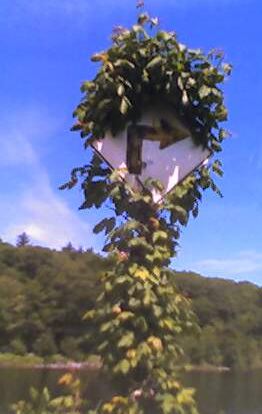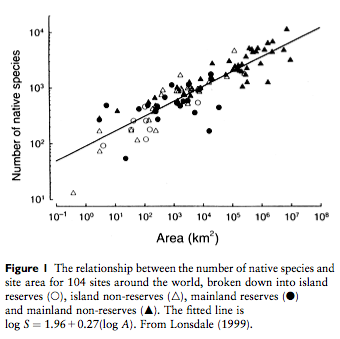
“It is as important to be of a size that does not fit in someone else’s mouth as it is to have a mouth suited to the size of one’s own prey.”
I can not too highly recomend Paul A. Colinvaux’s classic book “Why Big Fierce Animals are Rare.” I learned dozens of deep important things from that book; for example why the ocean is a desert.
The big fierce animal’s problem is two fold. He sits on top of a complex food web, a pyramid. It takes a big base on that pyramid for a few animals to sit on top. His second problem is wounds. He can’t take the risk of attacking anything that might wound him; since once wounded infection will do him in. For this reason preditors tend work very hard to avoid taking any risks when getting their prey.
Apparently if you plot the size of various species in a food web you notice that they are arranged in a stepwise manner. The species in any given layer in the web are sized so that they can pop their food, i.e. the next layer down in the web, quickly into their mouths.
Once you start looking at the world this way it can get quite amusing. Snakes and whales are extreme examples of ways of solving this problem. After reading the book I was very amused to notice how the foods in the grocery store have all adapted to fit easily into my mouth.
There was a time when strawberries were shaped to fit into the mouth of a sparrow. That sparrow would then complement the strawberry by planting it’s seeds in a distant location, complete with a little fertilizer. No wonder fruits are a diuretic. These days strawberries fit into the house wife’s mouth. Strawberry farmers fill in for the sparrows.
One model for the species-area relationship mentioned earlier that is is a side effect of food webs. The depth and breadth of a food web defines how many species a ecology can support and the larger area an ecology is the larger the web it can encompass.
These days I’m finding it interesting to note how there are some rules, like the mouth size rule, that create layering in a network. Which leads to questions like: are there similar ordering effects in social networks, or economic networks. What does this tell us about the striving of computer system architects to layer their systems?
Some species are generalists; i.e. omnivores, and they tend to undercut this model. A species that can eat off different layers in the food web takes energy that might support some more specialized species. In the business ecology we call such things Microsoft.
“What the hell are you leaving us?” Chad Waite, OVP – via Mark Tobias.




